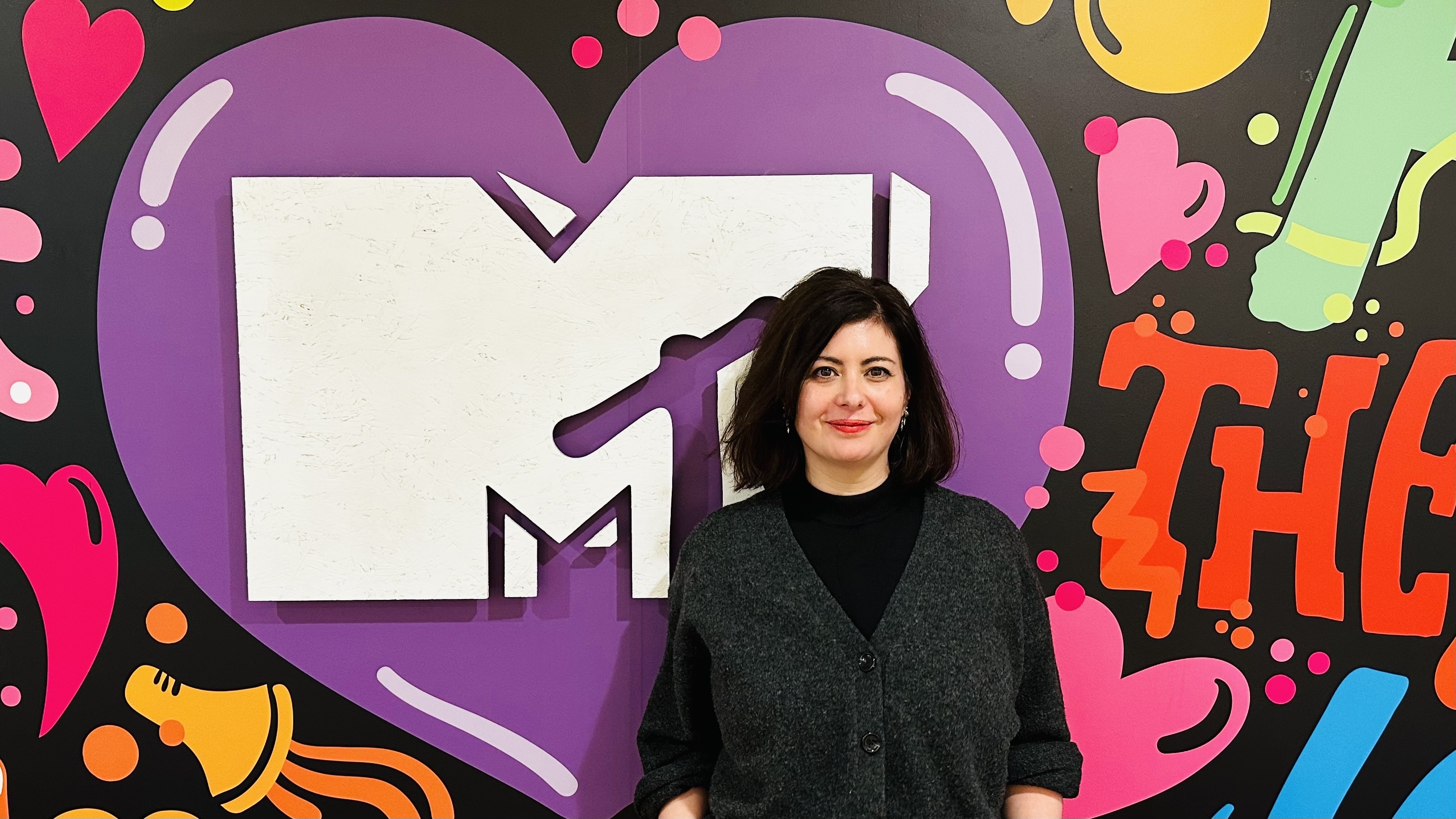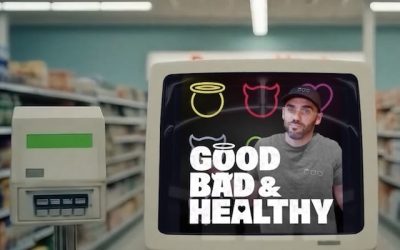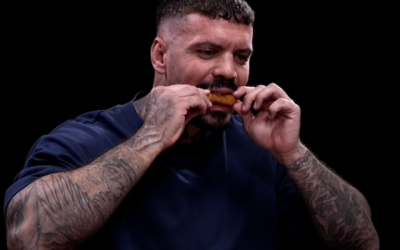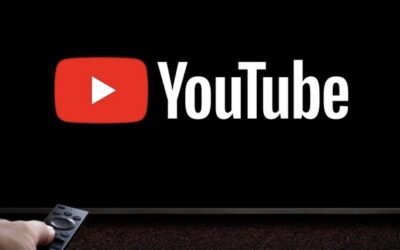Cat Collins is VP, international, digital & social, MTV Entertainment Studios – part of global entertainment group Paramount. Having started out as an entertainment journalist, the last 15 years of her career have seen her develop her digital first skills at Paramount, Sky and NBC Universal. Creatively minded and results driven, Cat has broad-based experience in creating innovative editorial content, developing the digital presence of brands across platforms, and implementing effective social media strategies – all while managing the agendas and expectations of stakeholders and commercial partners. This week, Cat spoke to The Drop about MTV’s approach to social first origination and the way it supports its established brands in the digital arena. In the same week that the company launched original series MTV Faces on YouTube and Facebook, she explained why a show about grief is a good fit. She also shared insights into production practices within her division and the trends she sees impacting the industry.
Can you tell us more about your role at MTV?
CC: Sure. Basically I’m responsible for looking after the digital content and platform strategy for MTV brands, primarily working with MTV and Comedy Central content across all regions outside of the US. I work closely with the US to set strategy, make sure it’s aligned with what our senior leadership teams want from us, and then communicate that down to regional teams – adjusting what is happening in the US so it makes sense in a global market. I also manage a production team here in London, which is responsible for not only looking at these brands from the UK perspective, but also creating content that goes out globally and is localised in some languages.
So what form does your digital first content take?
CC: Overall, it falls into three categories. Firstly, we’re looking at our TV shows, and how we can support their promotion across social media. That could be priority linear formats – or streaming formats now with the introduction of Paramount+. Secondly, we explore how we can maximise the potential of our archive; driving fandoms around legacy shows. We have such a big catalogue of iconic shows that we are always asking how we can make the most of it. Finally, there are our digital originals.
Can you illustrate how you might support existing brands?
CC: There’s a lot of value in simply presenting clips to fans of shows. So at a basic level it is about watching a TV show, pulling out moments that will resonate with fans and making sure they’re online either as promotion for an upcoming episode or off the back of it; a kind of second screening. We also have some of our team embedded in the production to make sure we’re getting behind the scenes stuff and candid moments with casts. To some extent, it’s about turning formats into a year round experience to keep people invested: whether there’s a new season to watch or not. It’s also about finding new ways to put our talent front and centre – creating formats that have some kind of connection with the original show. Ultimately, it’s about adding value to fans.
Can you expand on the importance of being embedded in the main production?
CC: I’ve been in digital production for around 15 years and it used to be the case that we would be called up after the show had been made to try and find a way to amplify it on social media. But now there’s a recognition that the audiences we can pull in through social are absolutely key to the success of the show. So we work closely with the production and creative teams from pre-production. Our goal is to generate as much valuable content from the shooting experience as possible.
Would you say MTV and Comedy Central are very plugged into everything else that’s going on in Paramount? Is there a good cross fertilisation of ideas?
CC: It’s a very large company, but we make sure we are all aware of everything as much as possible. There are important heritage brands like Nickelodeon where the crossover opportunity with MTV and Comedy Central isn’t obvious. But we’re very connected with Paramount+, leveraging each other’s knowledge and learnings.
Tell us a bit more about how your international remit works
CC: Each market has its own team on the ground. So their remit would focus on local commissions – for example Ex On The Beach in the UK, US, Brazil or Italy. Local content always works best so we want them to really focus on what is right for them. Our role at the centre is to make their lives as easy as possible by adding as much content as we can that they might need. And we localise where it makes sense. It’s complicated, so we’re constantly revisiting production methods to make that easier and quicker. But it’s really exciting to truly be at the heart of a global operation.
How about support for archive shows. What’s a good case study?
CC: This could be archive shows, or shows that are still ongoing but have a massive back catalogue. So a great example would be Jersey and Geordie Shore. There’s not a lot like that out there at the moment, but the TikTok generation loves it. Catfish is another iconic MTV brand that never dies in terms of audience appetite. So is Cribs. We love playing into the nostalgia around these shows. As a team we’re so aware of MTV’s heritage and our legacy – we never want to devalue that. So we’re always looking for opportunities to reuse and reinvent what we’ve got in the archive. The music content alone is a great resource because we own so many events and performances.
As you pointed out earlier, it’s not always about supporting existing MTV brands and IP, is it? You also originate various strands of content.
CC: Yes, this is quite a broad range of content. It includes high volume strands like MTV News, produced for 14 countries. We also have a digital first stand up show for Comedy Central, and a movie magazine show that has a lot of ancillary content that goes out only on digital. In addition, we have a growing slate of originals that are slightly more concept focus, slightly glossier and are important in terms of reputation building. We want to make sure that these series are as impactful as possible and in line with the brand’s values in terms of what we want to do around diversity, inclusion, and other issues that we feel need to be addressed. Here, the question for us is how can we say something important through an entertainment lens.
A good current example of your origination strategy is MTV Faces
CC: Yes. We saw Faces as an opportunity to open up real, honest, raw conversations. We wanted to explore topics that no one else is really talking about and we alighted on mental health as a starting point. In a sense, a lot of people are talking about mental health – but what they don’t do is break it down. It’s not one thing, but it is often categorised that way. So we decided to specifically explore issues of death and grief through the eyes of people who had experienced it. The overarching idea was to create a safe space for people to come and have honest, difficult conversations.
Tell us more about the component parts of Faces
CC: MTV Faces was directed and executive produced by Amie Parker-Williams. It explores themes of grief through the eyes of celebrity guests Brenda Edwards, Jordan Stephens, Kelsey Parker and Roman Kemp – all of whom have experienced different kinds of bereavement. The series is hosted by a former Ex On The Beach contestant Ashley Cain who has also experienced loss, when his daughter Azaylia passed at just eight months old. Ashley has been very vocal about sharing his grieving process and developed a huge online following who have really appreciated his openness. I think it’s been especially impactful because on the face of it you would think of Ashley as a tough guy. But he speaks really sensitively about grief and that made him the perfect person to work on a project like this, with people that have very different stories to tell. The first episode features Kelsey Parker, the wife of Tom Parker from The Wanted.
Do you plan to go beyond four episodes of Faces?
CC: Our commissioning strategy is to find formats and titles that can return when the moment is right. With Faces there are definitely many more stories to tell about grief, without us ever having to get salacious or gratuitous with the subject matter. But we want to see what response we get from the audience before producing more. It’s going out weekly, so we’ll have time to see how it’s received. One thing I would say is that our team found it incredibly gratifying to work on. Everybody feels like they’ve worked on something valuable to themselves as well as the audience.
As with other projects, will you be looking to move it out across platforms?
CC: The strategy with digital first content is similar to a linear TV show. So Faces will go out on YouTube in its full form. In this instance, we’re also putting it out on Facebook, to see what the response is like on the platform. There will be shorter cut downs for Instagram, TikTok and YouTube Shorts. We’ll also make sure content is promoted in other spaces like Twitter and Instagram Stories. The key is to deliver full cross platform activation without repeating what we’re doing in every space.
What else have you been doing in the originals arena?
CC: We’ve been working with digital originals for a few years now, for both MTV and Comedy Central. But there has been an evolution of our strategy, as we thought more about what we really wanted from this content. We went back to the drawing board and asked: how could we benefit our brands and speak to audiences? That’s when we began shifting towards content that tackles themes that connect with our audience. Platforms like TikTok have really democratised content creation. Everybody’s got a phone, everybody can film something, everybody can put it out on social media. So brands like ours really have to work harder in order to create something that really resonates with audiences in some way. We’re working with smaller budgets. We’re never going to take a cast of 20 to New York and shoot a reality series with them. But we can find ways to speak to our audiences in ways that are fresh and exciting.
What are good examples of this theory into action?
CC: A good one is an original series we produced called Queerpiphany, which is presented by trans model and activist Munroe Bergdorf and Tayce from Drag Race UK. The idea is that we invite LGBTQ+ talent and celebrities from the worlds of film & TV music to come into our studio. We then talk about a pop culture moment that meant something to them and gave them a queer awakening. So that series is super special. It’s an example of us finding a format that really feels meaningful and matters to our audiences.
We have another example, where we created an original series off the back of an existing long form series, Drunk History. Here we hit on the idea of making a digital first spin-off that gives a platform to under-represented voices. So that led to Drunk History: Black Stories. It’s the same show but fronted by black talent, and looking at amazing stories of black people throughout history that aren’t often told.
Will you be increasing the volume of originals through 2023 & 2024?
CC: We recently reinvented our commissioning strategy, so for the moment we are picking and choosing our products and making sure that we do things right. We don’t want to make the mistake of rushing into 20 things without really thinking about it – purely out of excitement. So we want to be certain it is the right project.
Do you ever create content with a view to it migrating to TV?
CC: It’s not the purpose of what we do, but it’s a conversation that’s gone back and forth over the years. Typically, we make content specifically for platforms like YouTube. But if our partner teams in linear and streaming are interested in that content travelling further we can make that happen. Queerpiphany and Comedy Central’s East Mode, which is fronted by Nigel Ng, are digital first but have had windows on TV.
For the last few years, a lot of digital first creators have thought in terms of YouTube first and other platforms afterwards. TikTok has changed that dynamic. From your perspective, what is the key platform shift you are seeing?
CC: For me, the shift to vertical video is the single biggest change in the way people consume content. The launch of YouTube Shorts is testament to that. It’s changing the way we look at production and how we present content. I’m not sure how far it will go, but it will be interesting to see if vertical video evolves into longer form content.





